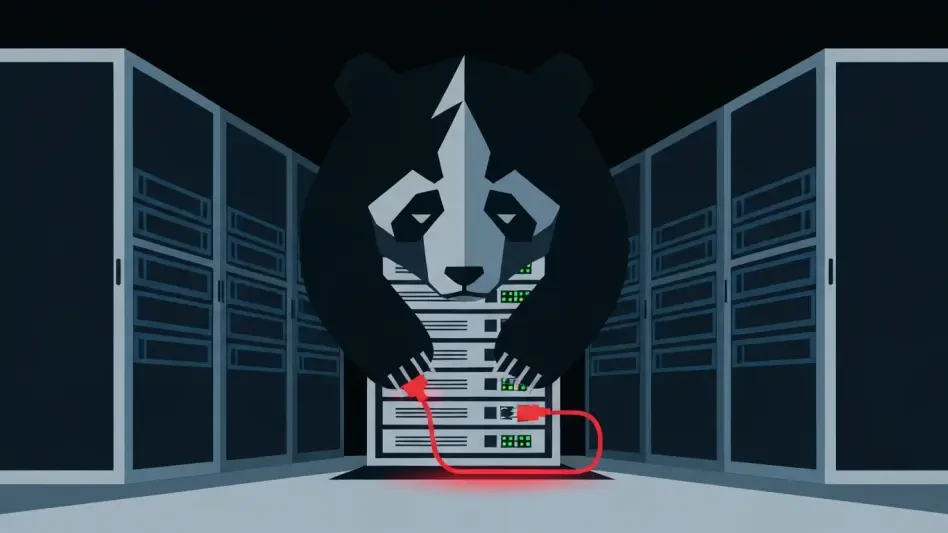The unveiling of the Batavia spyware campaign has sent ripples through the cybersecurity community, highlighting a worrying trend of advanced cyber threats targeting Russian industrial entities. A surge in cyberattacks employing Batavia spyware has been observed, with significant implications for the cybersecurity landscape in the region. This campaign underscores the persistent and increasing sophistication of cyber threats, drawing attention to the evolving tactics used by malicious actors.
Unveiling the Batavia Spyware Campaign
Initiated in mid-2024, the Batavia spyware campaign is a striking example of how cyber threats evolve over time, adapting techniques to bypass security defenses. The campaign employs deceptive phishing emails masquerading as legitimate professional communications to compromise the victim’s digital environment. These phishing emails cleverly mimic contract-related content, exploiting people’s inclination toward official-looking communications. This psychological manipulation marks a distinct methodology in the growing arsenal of cybercriminals.
After a victim interacts with the phishing email, the attack progresses as a VBA script downloads the malicious payload. This file, encrypted with Microsoft’s algorithm, acts as a gateway for further malicious activities. The script communicates with the attackers’ Command and Control server, adapting its approach based on insights retrieved from the compromised system. This adaptability not only enhances the attack’s stealth but also showcases an evolution of techniques in spyware deployment.
Context and Background of Cyber Threats in Russia
The prominence of cyber threats in Russia’s industrial sector highlights vulnerabilities that adversaries find lucrative to exploit. As the digital landscape integrates further into industrial operations, it becomes a prime target for cybercriminals seeking strategic data theft or disruption. The Batavia campaign represents a strategic shift, focusing on infiltrating operational environments rather than pursuing purely financial gains. This research highlights the dual challenges faced: the need to protect not only data but also the underlying operational processes.
Cyber espionage campaigns like Batavia signify a broader global trend where perpetrators aim to achieve operational intelligence for geopolitical advantage. Historical parallels with threats like CloudSorcerer emphasize how cyber adversaries exploit advanced technological infrastructures. As the Russian context demonstrates, cyber threats continue to adapt and intertwine with complex, real-world geopolitical dynamics, underscoring the critical need for sophisticated cybersecurity measures.
Research Methodology, Findings, and Implications
Methodology
The research employed an extensive investigation into the technical intricacies of the Batavia spyware. The study utilized methods such as malware reverse engineering and telemetry data analysis to uncover the spyware’s unique features and operational flow. A detailed examination of its components, such as executable files WebView.exe and javav.exe, provided insights into the techniques used for data exfiltration and stealth. By emphasizing file analytics, the study illuminated the mechanics of Batavia’s infection and its evasion strategies.
Findings
The study revealed an expansive scope of Batavia’s infiltration, exposing over 100 individuals across numerous organizations to its pernicious activities. It unveiled the exploitation of malware components to extract sensitive information like system logs and confidential documents. The attackers’ use of hashing techniques to eliminate redundant data transmission to their control server demonstrated efficiency in concealing activities. Another significant finding was the noticeable surge in the Batavia campaign’s activity early this year, illustrating strategic timing in cyber operations.
Implications
The Batavia spyware campaign underscores the need for enhanced cybersecurity awareness and defense strategies in safeguarding industrial operations. This development compels organizations to adopt comprehensive security frameworks, emphasizing timely detection and response. The strategic targeting of operational data indicates an advancing threat landscape, necessitating widespread collaboration and adaptive security measures. The research further pushes the boundaries of understanding the evolving risks in cyber espionage, providing valuable insights into future threat forecasts.
Reflection and Future Directions
Reflection
The investigative processes faced challenges typical in dynamic cyber threat landscapes—namely, maintaining adaptability in methodologies amidst rapidly evolving attack patterns. The study’s extensive data analysis illuminated the innovative approaches of modern cyber adversaries. However, addressing these threats required constant vigilance and proactive adjustments. Expanding the research scope to include the broader impact on international cybersecurity dynamics remains an opportunity for future exploration.
Future Directions
Future research could delve into the potential cross-border implications of spyware campaigns like Batavia. As cyber threats evolve, understanding their ripple effects on international cybersecurity policies could be pertinent. Investigating emergent techniques within these operations would also provide insights into the future capabilities of cyber espionage activities. Exploring collaborative efforts on a global scale to mitigate these threats could facilitate better preparedness in dealing with broader cyber challenges.
Conclusion
The research into the Batavia spyware campaign elevated the understanding of contemporary cyber threats targeting Russian industrial sectors. As cyber warfare increasingly aims at operational environments, the need for adaptive defenses is clear. The findings spotlight the strategic nature of these campaigns, focused not on immediate financial gain but on sustained intelligence-gathering and disruption. Continued vigilance, innovative security strategies, and international cooperation form the cornerstones in countering such sophisticated cyber threats in the future.








